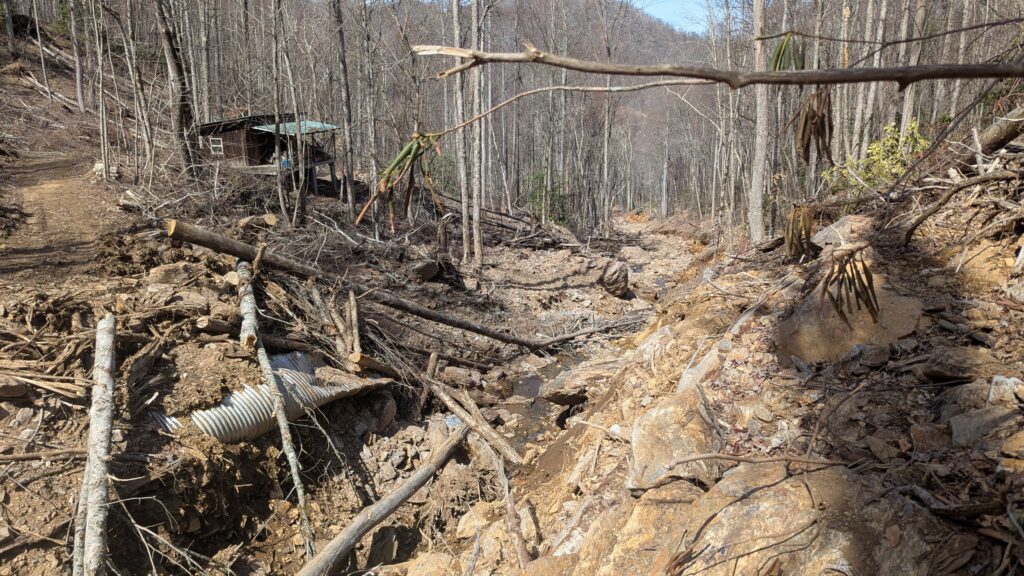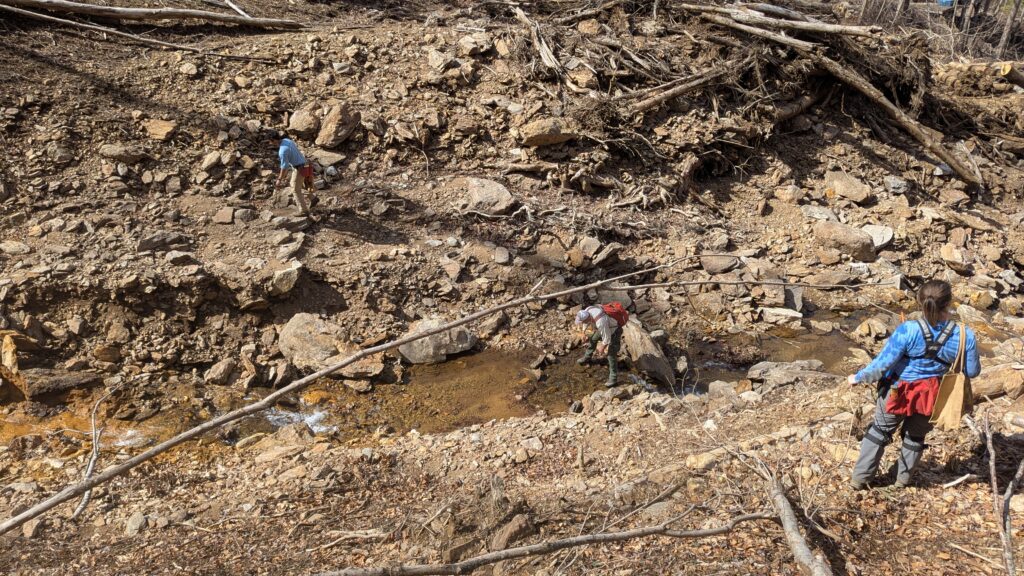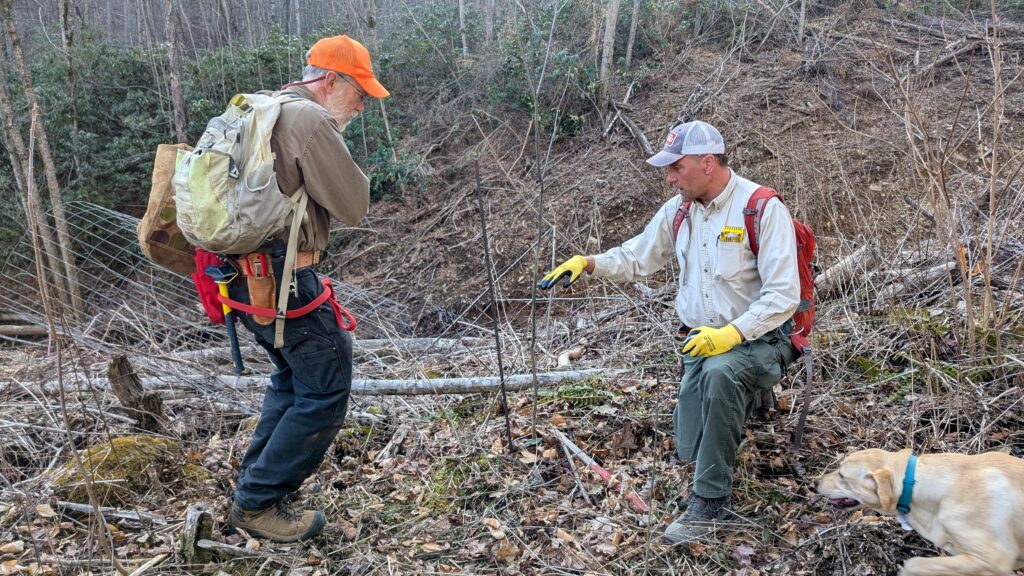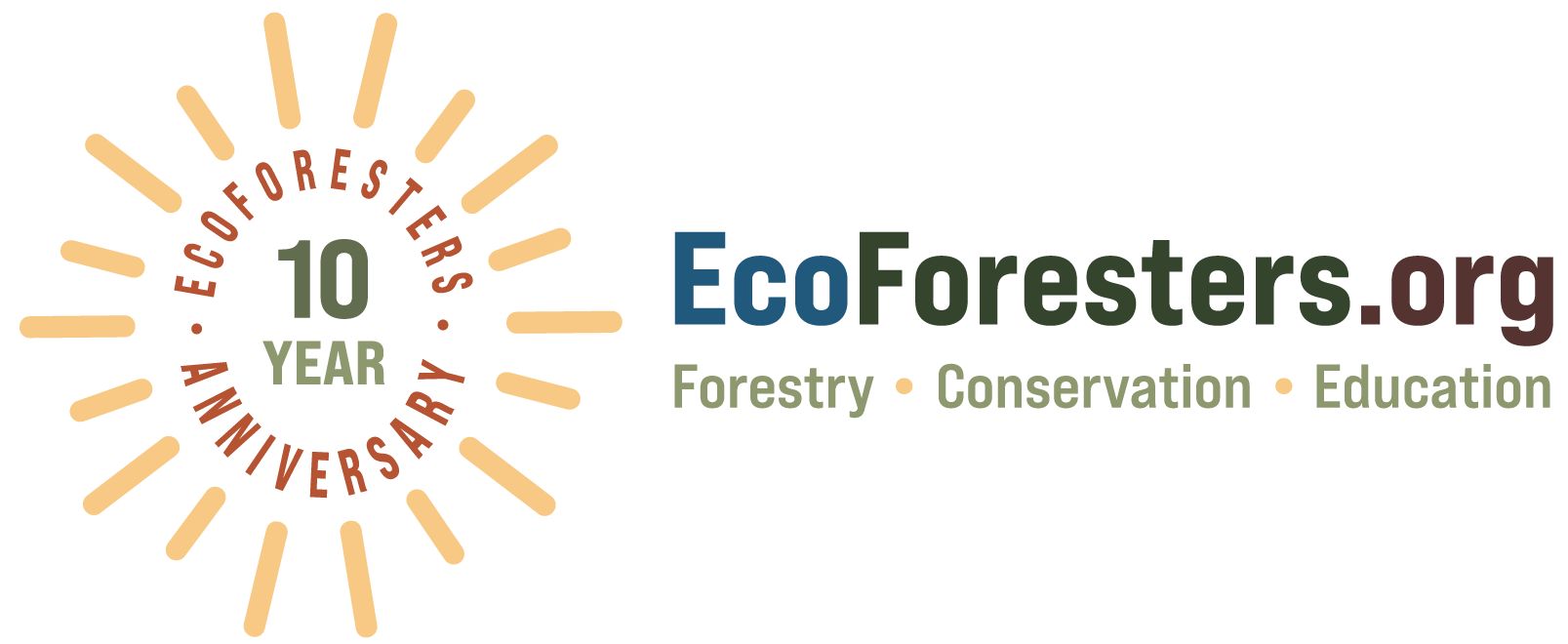A Landowners Devotion
Sometimes, landowners are putting in the work before we even engage them. These “model” landowners know what they want to do and are actively making their forests healthier. This is sometimes as simple as developing a plan and putting it into action. However, Russ Oates will tell you that nothing in the mountains is simple.
Russ won our EcoForester of the Year Award in 2023 for many good reasons. He is one of the most devoted and directly involved forestland owners in stewarding and restoring his forest for biodiversity, forest health, and wildlife especially. After all, he is a retired wildlife biologist who worked for 28 years for the US Fish & Wildlife Service. He and his wife bought 192 mountainous acres in Yancey County in 1996 and “retired” to return to NC from Alaska in 2013. They bought an additional adjoining 22 acres in 2016.

Over the past 28 years he has planted and tended over 1,200 trees that most benefit wildlife but need help getting established (oaks, hickories, chestnuts, cherries, spruce and fir) in small wildlife openings he created scattered across his property. The vast majority of these trees survived Helene and will be his legacy on the land. He visits every tree up to 3 times a year to control the more aggressive plants (with our crew’s help and some of our grant funding) that can outcompete the slower growing oaks to ensure there will be an even more diverse, resilient, and healthy future forest.
However, Helene took down roughly 15 acres of his mature forest: some with wind, but mostly by the large debris flows that tore through the 3 upper drainages on his property, which merged and continued down his formerly beautiful creek to create a bare ditch now up to 8 feet deeper and a devegetated area 30-160 feet wider than the creek was.
Fortunately, he had thoroughly controlled any non-native invasive plants on his original property long before Helene, so his forests will regrow well on their own with native plants, except maybe where it is now bare mineral (clay) soil – which is infertile, steep, and getting baked by the sun now that the trees are gone. However, despite this devastation, he has kept tending his planted trees – fixing up the damaged deer exclosures he built and installed on every planted seedling (once he realized he needed to do that about 5 years ago). He is also taking this as an opportunity to plant more in these newly disturbed areas.

His first priority is to get some vegetation established on these now bare, steep stream banks for immediate erosion control to stop more soil from washing into the creek and further impacting the previously very high-quality water. The simplest and quickest way to do this initially is to spread annual ryegrass (which is cheap, easily available and germinates in 3 days), some fertilizer, and straw mulch on these slopes: then, ideally on steep slopes, cover it with biodegradable coconut fiber matting to hold the seed in place. Once some vegetation is established, erosion will be greatly reduced. And then, he can overseed with more desirable and perennial native grasses and wildflowers. Next, as the annual ryegrass dies back over the summer, the naturally existing and additionally spread native seeds can grow and establish a nice native grass and wildflower stream bank this growing season. This work is still in the early stages, but will proceed further as more assistance is secured.
To truly stabilize these stream banks he is planning on getting perennial woody plants established with year round roots to really hold the soil in place. Fortunately, many floodplain species will grow roots by just putting a freshly cut branch at least half way (preferably 2/3rds) into the ground with at least 2 buds above the ground – called “livestaking”. Branches that are at least 1’ long and at least ½” in diameter work well for species such as willows (silky or black), dogwood (silky or red osier), elderberry, nine-bark, buttonbush, alder, spicebush, and even larger tree species such as sycamore, cottonwood, and river birch. (For more info see NCSU Extension Service’s publication: https://bae.ncsu.edu/wp-content/uploads/sites/3/2017/07/Small-scale-Solutions-to-Eroding-Streambanks.pdf).
Finally, he plans to plant a row of white oaks (the most desirable tree for wildlife), and possibly some shagbark hickories along the top of the stream bank. Russ has applied for Emergency Forest Restoration Program funding from the Farm Service Agency which will help offset the costs of his work. He is still waiting patiently to learn if he was accepted, but landowners that have a management plan and are mitigating wildfire risks should be well suited to be reimbursed for some of their expenses.
This is what one dedicated man (and a very understanding wife!) can do when he devotes his time and invests his money in improving his forest. It is likely that this forest will come back more diverse, resilient and healthy in the future – even after the destruction of Helene.

